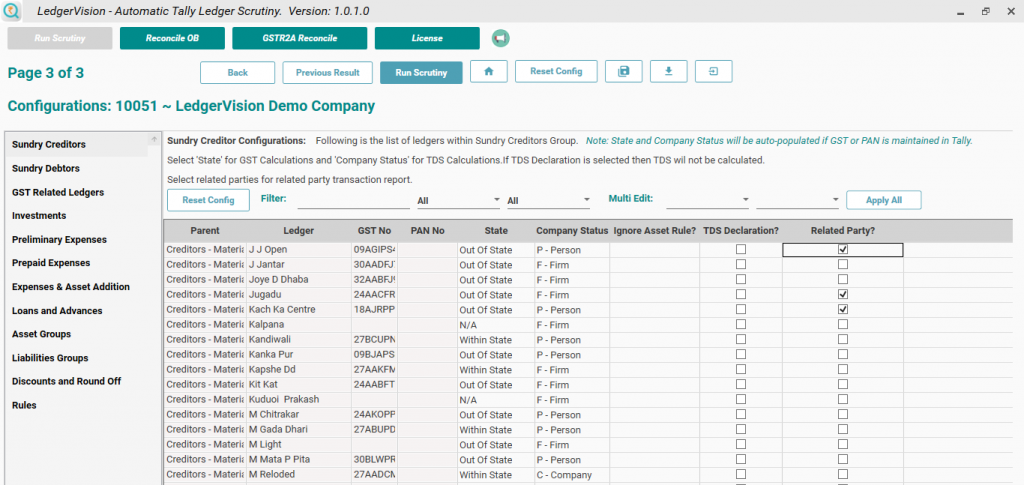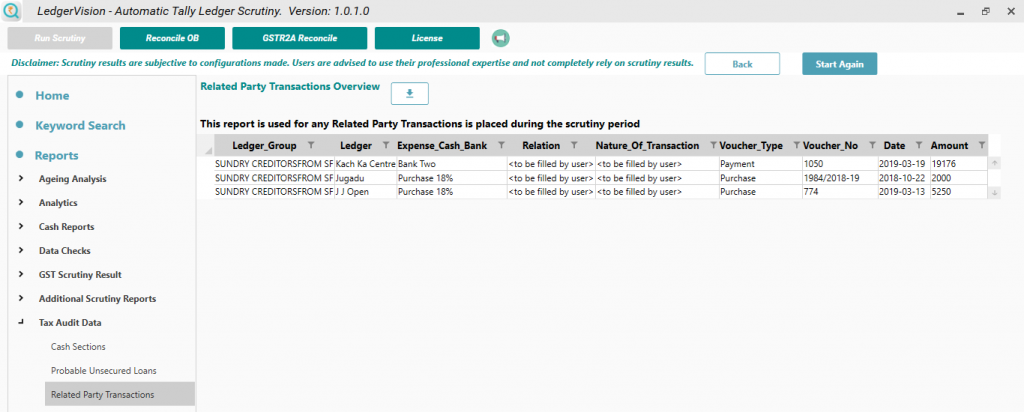Related Party Transactions Report
What is Related Party?
The concept of related party is defined in Various Acts like Income tax Act 1961, The Companies Act 2013, as well as in GST also. In simple words related party is person who is relative, director, partner, or relative of director partner, or having significant voting rights. This means any person can control or having influence over other person’s financial decisions.
What is Related Party Transactions?
Related party transaction means exchange or financial obligation or resources between two parties irrespective of price. Lets look at how Related party transactions taken care in LedgerVision and how reporting is done
1. Configurations for Related Parties
There is configuration requirement in LedgerVision for obtaining related party transaction report. Configuration is very simple. Check boxes are given in Creditors list, Debtors List, Loans and advances list, and Loans (Liability). User has to just tick check boxes in front of related parties.

2. Reporting of Related Party Transactions in Tabular format
LedgerVision provides report in tabular format. It shows all transaction of related parties involving payments or expenditure entries. Following points are covered by table:
- Name of the Transacting Related Party
- Description of relation between the parties (This column is kept blank user has to fill this as there is no way to figure out the relation on the basis of mere accounting entry passed in tally)
- Description of Nature of Transaction (This column is also kept blank user has to fill in the details)
- In case of payment entry name of ledger from where the payment is affected e.g. Cash, Bank, OD/CC
- In case of JV/ Purchase entry name of purchase ledger or expenditure ledger
- Voucher Number/ Voucher date and Amount of voucher
